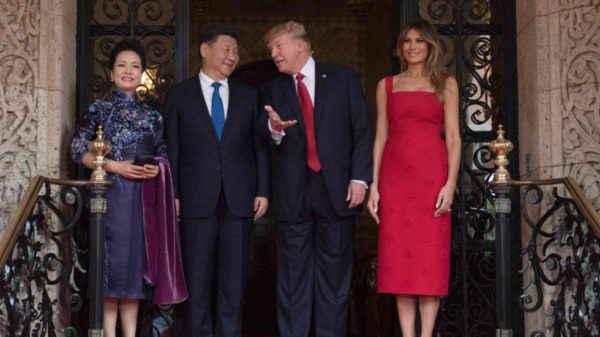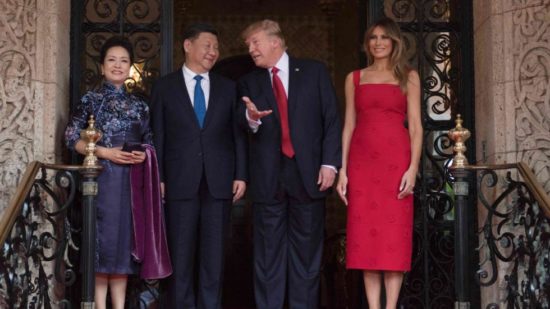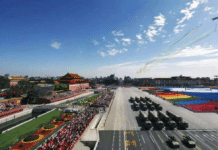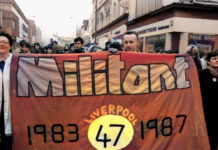Ivanka Trump granted new Chinese business deals on the day she dined with Xi Jinping
Vincent Kolo, chinaworker.info
The risk of trade war between the world’s two biggest economies has receded, for now at least. The first meeting between Xi Jinping and Donald Trump in April, at the billionaire US president’s Florida resort of Mar-a-Lago, was like most such meetings mostly about symbolism rather than substance. But it marked another significant political u-turn for Trump, who climbed to power on a nationalist ‘America First’ trade agenda. In last year’s election he accused China of “blackmail” and even “rape”, and promised severe countermeasures also against other “trade cheats” such as Germany and Mexico.
Before Trump and Xi met their respective teams had hammered out a deal on what would be discussed, with assurances made by the US side that a potential economic ‘nuclear war’ would be defused in return for Xi delivering greater support to Trump’s push to further squeeze North Korea over it’s weapons programme. Trump even tweeted that China would get a better trade deal if “they solved the North Korean problem”.
The main reason for Trump’s softening stance on China, and an equally dramatic lurch towards more aggressive military posturing, is the crisis in his administration after just three months in office. It faces internal splits, weak public support and a succession of political fiascos.
One week after the Mar-a-Lago summit the US Treasury as expected did not name China as a “currency manipulator”. This represents a high profile reversal of Trump’s campaign promise that he would do this “on day one” of his presidency. For the first time ever, the Treasury’s report actually recognised that China has been fighting to stop its currency falling against the dollar (spending a massive US$800 billion in foreign exchange since the end of 2015).
This reversal was attacked by leading US Democrats who favour a harder line against China. The half-yearly Treasury review instead put China on a currency “watchlist” together with Japan, South Korea, Taiwan, Germany and Switzerland. If a country is branded a “currency manipulator” the US government can impose penalties such as tariffs against its exports to the US.
Trump ‘talking down’ the dollar
Socialists point out the hypocrisy involved here: all major capitalist governments, and not least the US, engage in currency and other forms of manipulation when this suits their interests – to defend the profits of their own capitalist class. Trump is himself deliberately ‘talking down’ the US dollar right now (“Our dollar is too strong” he told the Wall Street Journal in mid-April), which set off sharp falls in the US currency.
Trump is under pressure to boost US exports and bring down the US trade deficit to fulfil at least a fragment of his election promises. He may also pressure the US central bank (the Fed) to hold off on further interest rate increases, because this acts to push up the value of the dollar by drawing in speculative capital from abroad.
Chinese officials have been assiduously lobbying Trump’s coterie even before he came to power in January. According to reports they have established a “back channel” with Trump’s influential son-in-law Jared Kushner who represents a more China-friendly wing in the internal power struggle raging within the Trump camp, to neutralise the influence of anti-China ideologues like Peter Navarro (of ‘Death by China’ fame) who is Trump’s special trade advisor.
The Chinese regime has not hesitated to exploit the extensive business links between Kushner’s family, not least his wife Ivanka Trump, the president’s daughter, and Chinese companies. AP reported that on the same day that Ivanka and Kushner sat at the Mar-a-Lago dinner party with Xi Jinping, the Chinese government approved three new trademarks for Ivanka Trump’s fashion business giving her, “monopoly rights to sell Ivanka brand jewellery, bags and spa services in the world’s second-largest economy.”
The Trump-Xi summit unveiled a ‘100-day plan’ by the US to review its trade and investment links in order to reduce its trade deficit with China – US$347 billion last year. This type of ‘fudge’ is typical from such global summit meetings and doesn’t actually commit China to do anything.
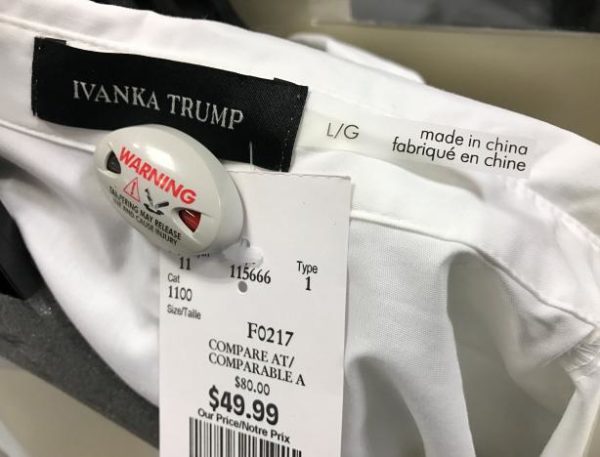
Concessions
However, no one should rule out that the highly unstable Trump regime could switch tack again at the end of this 100-day period, or further ahead, and present a tougher list of demands. China’s media have reported the US proposal as a “100-day plan on economic cooperation” which is not the way it is presented by Trump’s government.
It’s quite likely that Beijing will make concessions, but small ones, to avert a sharper conflict with the US, for example by curbing some exports like steel, which are highly visible (and opposed by industrial lobbies and labour unions) but actually account for only a small fraction of China’s US trade. China could also increase its imports from the US of oil and agricultural products (Xi agreed to lift China’s ban on US beef) to go some way to reduce the deficit. It wants the US ban on technology exports to China lifted, and similar limits on Chinese investments in US technology companies. US capitalists are pushing for greater access to the Chinese market, into state-dominated sectors like finance, and the lifting of investment and ownership caps.
But despite efforts to “manage risks” there is still scope for major frictions to erupt between the two governments, especially if the precarious ‘stabilisation’ of the global economy in early 2017, in reality it is still stuck in crisis mode, is about to fizzle out. In that sense, the “100-day plan” and the current state of US-China economic relations seems like a temporary truce rather than a lasting peace.
